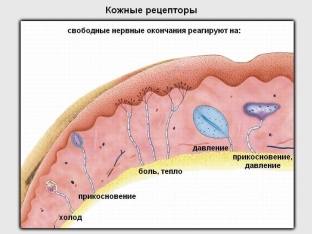Leather – This is the largest organ in the human body, the main function of which is to protect the body from the effects of harmful environmental factors. It is the skin that is the first to encounter mechanical, chemical and even biological damaging agents. Skin receptors instantly transmit signals to the structures of the central nervous system, and the body reacts to damage in one way or another. There is also a feedback between the nervous system and the skin, because everyone knows that stress – one of the worst enemies of our skin. Having explored this connection, scientists have discovered another progressive direction in modern cosmetology – neurocosmetics. What is the essence of this innovation – read on estet-portal.com.
How neurocosmetics can benefit the skin
The term «neurocosmetics» first appeared on the market in 2000, but this issue has only been actively studied at the present time. The main idea of this kind of cosmetics is to influence the skin through its neuroreceptor apparatus.
The composition of neurocosmetics includes high-tech progressive synthetic ingredients that, through a system of receptors and nerve connections, are able to trigger certain physiological processes in our body.
Having studied all the subtleties and nuances of these processes, scientists have found out that by influencing the production of neurotransmitters, it is possible to influence the condition of the skin to a large extent.
Neurocosmetics:
- mechanism of the influence of neurocosmetics on the condition of the skin;
- what results can be expected from the use of neurocosmetics;
- types of peptides that are used for the manufacture of neurocosmetics.
The mechanism of influence of neurocosmetics on the condition of the skin
In the human skin there are receptors that are sensitive to various influences of environmental factors. The transmission of a nerve impulse from them is carried out with the help of neurotransmitters. Of the 200 neurotransmitters studied to date, 25 are found in the skin, and most of them – neuropeptides. They are produced by keratinocytes and endothelial cells of the skin, as well as non-cholinergic nerve endings that are found in the epidermis. Release of substance P – the main neuropeptide, which is produced by the nerve endings of the epidermis, leads to an increase in tissue edema, secretion, and vasodilation of the skin. Neurocosmetics that act on non-cholinergic nerve endings are able to suppress the production of substance P, thus having a positive effect on the skin.

What results can be expected from the use of neurocosmetics
As studies show, neurocosmetics, by influencing the nerve endings of the skin, has a positive effect on the condition of the skin. In modern cosmetology, neurocosmetics can be used for:
- complex treatment of dermatoses;
- restoration of the protective properties of the skin;
- reducing the manifestations of skin diseases associated with stress;
- reducing the level of skin reactivity;
- use in the rehabilitation period after invasive cosmetic procedures;
- use as a component of complex programs for sensitive skin;
- use in dermacamouflage preparations with a therapeutic purpose.
Types of peptides that are used for the manufacture of neurocosmetics
The most promising direction in the field of neurocosmetics at present is the use of peptides as inhibitors of excessive secretion of neurotransmitters and substance P. For this purpose, the following types of peptides are used:
- signal peptides – have a stimulating effect on the extracellular matrix, namely on the synthesis of elastin and collagen;
- barrier peptides – capable of stabilizing and transporting certain metals that play an important role in enzymatic reactions;
- Neurotransmitter-modulatory peptides – reduce stress-dependent manifestations of aging processes, prevent spontaneous contraction of fibroblasts, take part in the formation of complexes necessary for exocytosis, reduce excitation in neurons and slow down the cascade reaction of the inflammatory process.
Neurocosmetics – this is a progressively developing direction that opens up new opportunities for modern cosmetology.
It is quite possible that with the advent of such cosmetic preparations, stress will cease to be one of the processes that significantly accelerate skin aging.







Add a comment